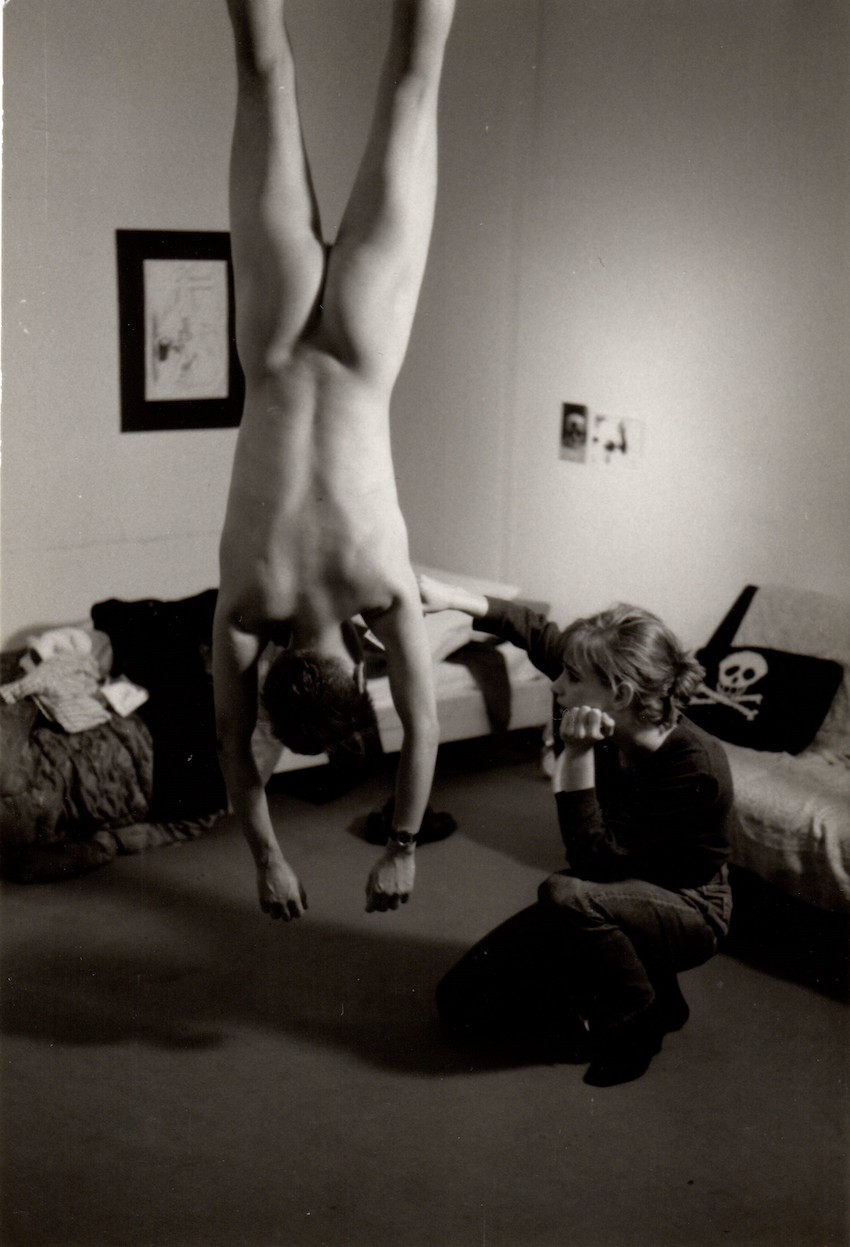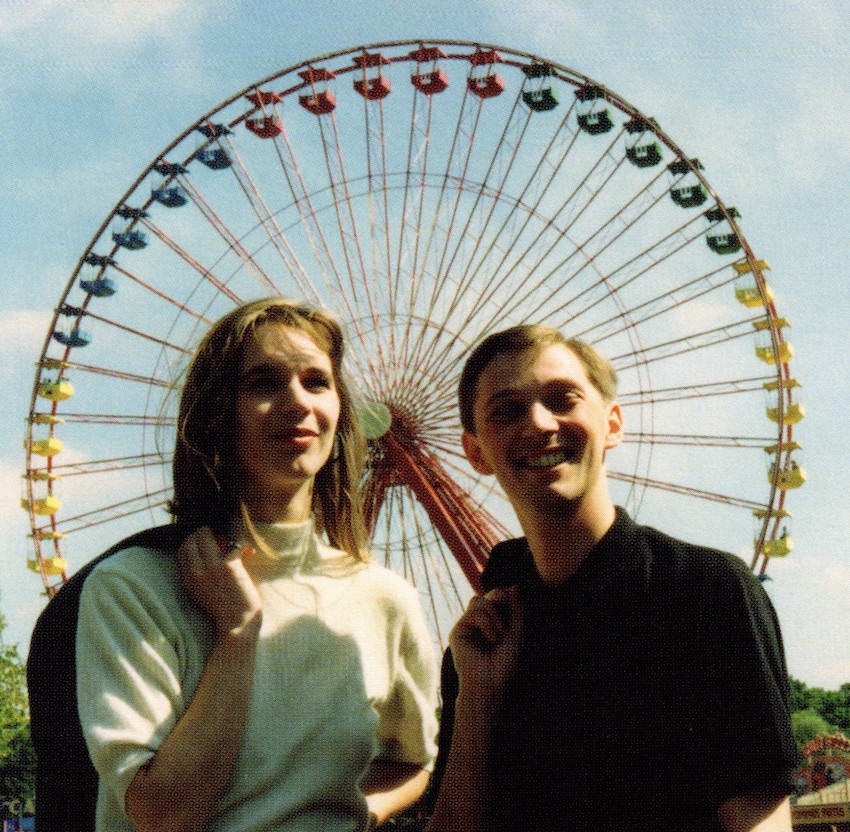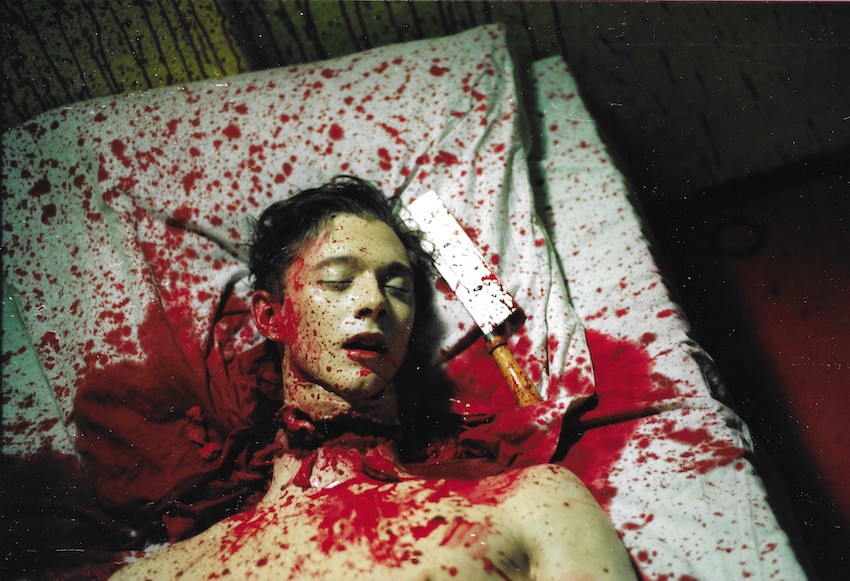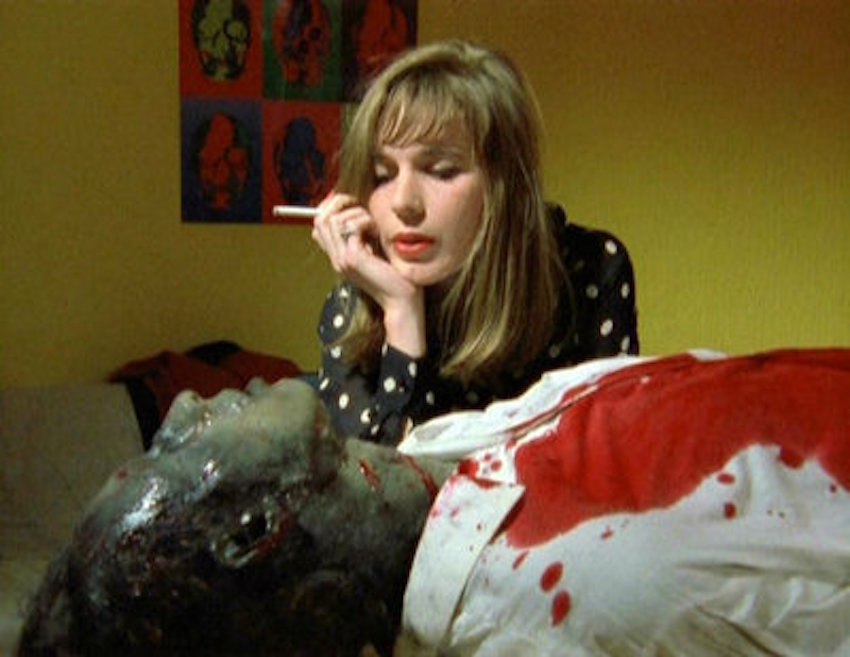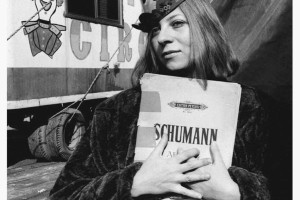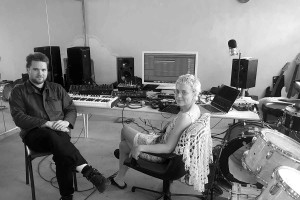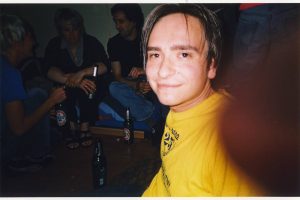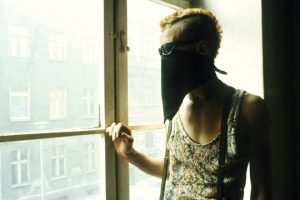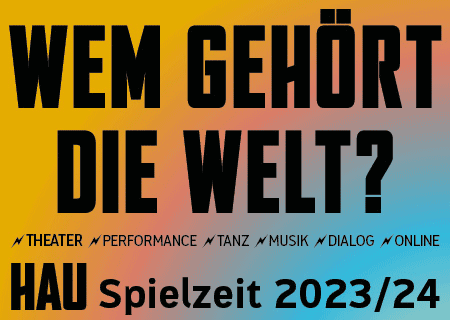Mark Reeder: “People in the East were camera shy”
Mark Reeder not only played a leading and dying role in Nekromantik 2, he also delivered the soundtrack to this classic German splatter film.
Mark has just exhumed and reexamined his score for digital release
Mark, how do you personally remember the era in which “Nekromantik 2” was created in the summer of 1990?
Mark Reeder: The Berlin Wall had just fallen only a few months previously, but the German Democratic Republic still existed and politically the Communist Government was still clinging on to the threads of power. I was quite concerned at the speed at which the East Germans seemed to crave for so-called change. It wasn’t about democracy, it was about being able to go to the shops in the West and buy stuff. They all seemed to want to get rid of the Communists as soon as possible, and everything associated with them, and they weren’t bothered what replaced them, as long as they were not allied to the Soviet Union. Obviously the Easties didn’t fully understand the realities of how our Capitalistic society worked, but it looked so much more attractive after years of Commie stagnation, and they were so eager and willing to sell it off as soon as possible. In reality it was just a craving for the Deutsch Mark and the chance to buy a car. You couldn’t blame them for that.
I got the impression the GDR had almost become an imbiss society almost overnight.
I realised too, that our enclave of West-Berlin was also going to change eventually, but in the Summer of 1990, it was more or less the same as the year before. Both halves of Berlin were still bombed out and fucked up and in ruins, and at that point, still unattractive.
The East looked just a little bit more fucked up. For most people from the West, the East was still an enigma. They hardly went if ever to the East while the Wall was up, but now it was an alluring tourist attraction.
So, while those from the East checked out the West, the Wessies checked out the East.
1990 was a lovely summer. The atmosphere in the city was optimistic and positive. A new life seemed possible and you could sense it in the air. I was looking forward to the second Loveparade in July, which would see people from both sides of the city dancing on the street together for the first time. The feeling of freedom was magnificent.
What influence did the post-Wall period have on such a subcultural project?
We already had our flourishing sub-culture in West-Berlin long before the Wall came down, and there was a secret sub-culture brewing under the surface in East Berlin at the same time too. Although, in the West no one really cared what our sub-culture created, it was generally supported or tolerated, whereas in East Berlin it was forbidden and punishable with prison. The fall of the Wall gave all those creative people in East Berlin the opportunity to experiment and emerge from the cocoon of communism like a beautiful butterfly.
Jörg had the idea for making “Nekromantik 2” already before the Wall came down. His first “Nekromantik” film had been quite a success and Manfred Jelinski thought it would be a great idea to make a second part. I had also had a bit part in Jörgs previous film “Der Todesking” together with Hille Saul, who later ran the E-Werk Club during the 90s.
Jörgs partner Franz Rodenkirchen was friends with Laibach and a regular in the Pinguin Club. I co-owned a small bar in Schöneberg called the Pinguin Club. They wanted someone who could look stiff and conservative and wear a suit and tie a tie. I was the only person in their circle of friend who fit that bill. Mind you, with me they got a great deal, a two-bit amateur actor, the use of the Pinguin Club and someone to make the soundtrack.
The fall of the Wall also opened up new opportunities to film. Unknown locations were literally everywhere in the East part of the city and everywhere looked like a film set. It appeared that they had no rules or regulations anymore either, which meant you didn’t need to apply for permission to film like you had to in West-Berlin, or former Communist East Germany.
The film was partly shot in the East part of Berlin. What impressions remained with you?
We used the exteriors of East as our backdrop, as it was still a virtually unknown part of the city for Westerners. We didn’t want to have the familiar places of West-Berlin, but the decrepit facades of East Berlin, or the typical East Berliner Platten-Bau buildings. We wanted to integrate the East into our story without ever mentioning it. For us the city was now one. Also, West-Berlin didn’t have a Strassenbahn either, that was exclusively Eastie, and it gave the film a completely different feel. The first thing we filmed was in the spring of 1990 at the Plänterwald amusement park. Then we went to the Tierpark. We just bought a ticket and went in. Normally, you would need permission to film in such a location, but no one asked and we didn’t tell. Most of the places we filmed at I already knew because I was a regular visitor to the East during the communist era and I had been there already. So, I knew the Eastern part of the city fairly well.
The interiors we filmed mainly in West-Berlin. It was probably the first film to be made in East and West Berlin. Another film, by our friend Cynthia Beatt, called The Party which starred Tilda Swinton, was also made later that summer too. That was filmed at the former Border Guards barracks opposite what is now the Arena, and I also played a drunk in that film too together with Simon Fisher-Turner and I also provided some music for the score.
Were there encounters with the population in the eastern part that you remembered for a long time?
Not really. No one bothered us while we were filming. We were quite discreet. People in the East were camera shy. So, they would move out of the way if they saw the camera. I guess it came from years of feeling observed by the State.
Would you say that the special aura of the fall of the wall and the uncertainty of what would happen next affected your music – in addition to the film theme, of course.
The fall of the Wall and a possible uncertain future didn’t play that much of a role to be honest. Berlin had quite an optimistic air. The cold war was over and we could all breathe a sigh of relief. I had plenty to do and my future certainly didn’t look uncertain. Earlier in the spring, I had just finished producing the last album of the GDR. I already co-owned the Pinguin Club and in December 1990, I founded my own record label MFS, with the help of the former AMIGA, in East Berlin. When I started work on the Nekromantik 2 soundtrack, the World was actually teetering on the brink of Gulf war one. Earlier in August, Saddam Hussein had invaded Kuwait and by December, a coalition of Western forces were preparing to invade. While we were recording, bombs were raining down Baghdad and Saddam’s Scud Rockets were dropping on Tel-Aviv. We had the silent TV on constantly and could see news readers reporting in gas masks, or the tracers from anti-aircraft guns firing on unseen bombers. It was quite bizarre. It certainly coloured the melancholy of the music.
The film was cut to your score and not, as is usually the case, the score was adapted to the needs of the film. What did that mean for your way of working?
It was quite complicated. I had nothing to go on visually and Jörg had never shown me a script and we basically made “Nekromantik 2″ up as we went along. I think only Monika had a rough script for some of her scenes. So, I had to rely on what Jörg and Manfred told me they had filmed with her, which I then tried to envision how her scenes might appear on the screen. Obviously, I knew the bits that I had appeared in myself, and therefore I tried to imagine what they would look like together with my poignant music. Monika would have an emotionally troubled and tormented score, whereas I wanted my parts to have an almost comical light-hearted feel to them, as I am the unsuspecting victim. I remember discussing Monika’s dismemberment scene with Paul Browse in the Pinguin Club one night, and we were trying to imagine what it must be like for someone to be in the tragic position of having to dismember the person you loved. The music had to be suitably sad and tragic. Jörg later added a little twist in the original film score, by adding a piece by Hermann Kopp, when Monika goes from being saddened to being psycho.
Of course, I had to make far more music than would be used in the finished film, and many variations on the same theme, as I had no idea how the music would sound with the pictures. I left it up to Jörg and Manfred to decide on what worked and what didn’t.”
Did you have any role models for your work on the soundtrack?
Yes naturally. Being a horror film fan, I also wanted to have something which would be more like a mixture of Wendy Carlos meets Dario Argento, or perhaps a Goblin-meets-Vangelis kind of synth-soundtrack with a bit of Italo-Ennio Morricone thrown in. I wanted it to be mysterious and atmospheric but at the same time tense and scary. In the late 80s and early 90s there was a fashionable move away from bombastic orchestrations and more electronic scores were being commissioned.
Films like “Dust Devil”, “Near Dark” or “Terminator 2” had mainly electronic scores and many low-budget horror films were usually enhanced by their cheap sounding scores.
Jörgs first “Nekromantik” film score from 1987 was composed by Daktari Lorenz and performed almost entirely on an Ensoniq sampler. So, I borrowed the same Ensoniq as I wanted my score to connect both films with a similar kind of sound. I also had my Roland 106 and an Akai 900. I was originally going to play some twangy guitar on a few tracks too, but I never got around to it.
Do you remember what the soundtrack was on the streets of Berlin in the summer of 1990?
For me the sound of that summer was Techno. It was the second Loveparade on the Ku’damm and it was thrilling.








